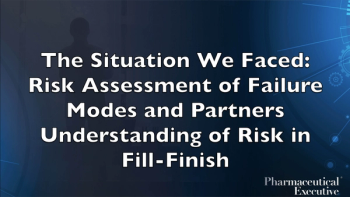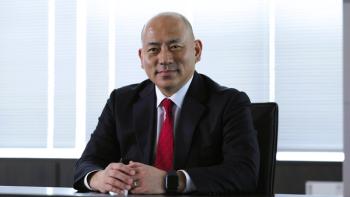
- Pharmaceutical Executive-04-01-2008
- Volume 0
- Issue 0
The WIIFM Initiative
Everyone likes to work for a successful company. But how do you drive your initiatives to the top? Never underestimate courage and persistence.
WIIFM is a favorite on everyone's dial. What's In It For Me is how an initiative gets built—why do it otherwise? Driving a new initiative for the firm, which is what leaders do, is tough to accomplish without knowing the WIIFM motivation.
Sander A. Flaum
Results don't lie. "Excellence in execution is the only long-term competitive advantage," says Raul Cesan, former president and chief operating officer of Schering-Plough. Everyone wants to work for the company that moves ahead and stays on the cutting edge. If not driving upward, you're just a commodity firm, and there's nothing exciting about that. In order to drive the initiative, you have to show that there is something to be gained—something for you and for them.
Cesan knew Claritin could do more than the 14 percent market share his team projected; he wanted 40 percent. "Too much," they answered. "Come back in a week with a number that can get us to 40 percent," he challenged. They put the numbers together and came back with a $200 million advertising budget. "Let's do it," Cesan said, to the amazement of the team. Claritin broke new ground with a direct-to-consumer advertising campaign for the prescription drug, won a 50 percent market share, and became a $3.5 billion blockbuster brand. Cesan's drive changed not only a single product launch, but also the shape of the entire pharmaceutical industry.
Steve Jobs' aggressive and demanding personality was made legendary when Fortune called him one of Silicon Valley's leading egomaniacs, but it was Jobs' innovation and style—combined with the aspiration to position Apple and its products at the forefront of the information technology industry—that led to the iPod success story.
A CEO study by B-school professor Steven Kaplan and colleagues at the University of Chicago reports the tougher the CEO, the better—acknowledging that "harder" personal characteristics focusing on performance and execution are paramount to success.
"When hard times came to the tech sector, we went to our investors and said, 'We're going to spend more on R&D and innovate our way out of this downturn.' We did, but it was rough," Jobs has said.
After analyzing hundreds of extensive interviews with CEOs, the University of Chicago researchers found that successful chief executives were a hard-nosed lot who hired Grade A players, set high standards, and showed attention to detail, efficiency, problem solving, and persistence.
Leaders with persistence who can perform with excellence and who have the courage to hire good people are the font of initiative momentum, motivating people to get ahead of the curve and realize better returns on faster timetables. It's up to you, the leader, to get your company moving. This is sometimes a matter of changing your focus. Competing with the number-one and -two contenders on a level field is not the best way to drive a new initiative if you are number four, and vice versa. Change the field instead; change the focus. As the company grows, so do you.
Gillette has been number one in men's razors for so long that when the company made its last appearance on the New York Stock Exchange in 2005, over one-third of its value was in brand recognition. Why, then, does it continually cannibalize itself, developing a new razor to replace the previous top seller? Some will remember the Trac II, then the Mach3, Mach3 Power, and now the five-bladed Fusion and Fusion Power. The answer is that Gillette is never fat and happy; it strives to maintain number one. "Courage is key to effective leadership, which in turn drives critical innovations," says A.G. Lafley, CEO of Procter & Gamble, which bought The Gillette Company—Lafley's winning move to make P&G into the premiere consumer goods and services company in the world. Procter's people love working for Procter. It's good to be number one.
How do leaders drive new initiatives and the "big idea" processes? Persistence never goes out of style. Persistence is the ability to see difficulty simply as territory through which you have yet to navigate. Make a believer out of yourself and transcend limits. No is only for today, fight for a yes tomorrow. When you start to believe, it will begin to show—and others will believe too. I am convinced that, ultimately, the most important thing a person needs is total conviction that it can be done. Fight until you get it.
It is interesting to note the ongoing human desire for rock-solid iconic leaders. The University of Chicago report ranked "softer" teamwork skills, such as flexibility, enthusiasm, and listening, at the very bottom of the desirable CEO traits. Leadership is the closest thing we have in our society to applied philosophy. Real leaders recognize the need to be surrounded by ambitious, passionate, bright achievers who will champion a new direction. When leaders are in sync with their followers, both sides are transformed by the experience of having a focused mission and overcoming a difficult obstacle. Expect that WIIFM will bring you joy, leading to a life of higher meaning and the ability to push your people to become more than they ever imagined possible.
"A goal is a dream with an ending," said jazz legend Duke Ellington. Driving a new initiative takes single-mindedness, and to be able to execute on a field of excellence requires an incredible amount of concentration and vision. We must use every ounce of energy to accomplish what we want, even if that end takes us beyond our own lifetime.
Sander A. Flaum is managing partner of Flaum Partners and chairman, Fordham Graduate School of Business, Leadership Forum. He can be reached at
Articles in this issue
over 17 years ago
Valuing Diversityover 17 years ago
Tracking Pharma Consumers Onlineover 17 years ago
Putting the "I" in "Team"over 17 years ago
The Navigator: Charlotte Sibleyover 17 years ago
Supply Chains Without Bordersover 17 years ago
Mind the (Tax) Gapover 17 years ago
Molecular Fraudover 17 years ago
How to Wow the Docsover 17 years ago
Money-Back Guaranteeover 17 years ago
The Hispanic FactorNewsletter
Lead with insight with the Pharmaceutical Executive newsletter, featuring strategic analysis, leadership trends, and market intelligence for biopharma decision-makers.




